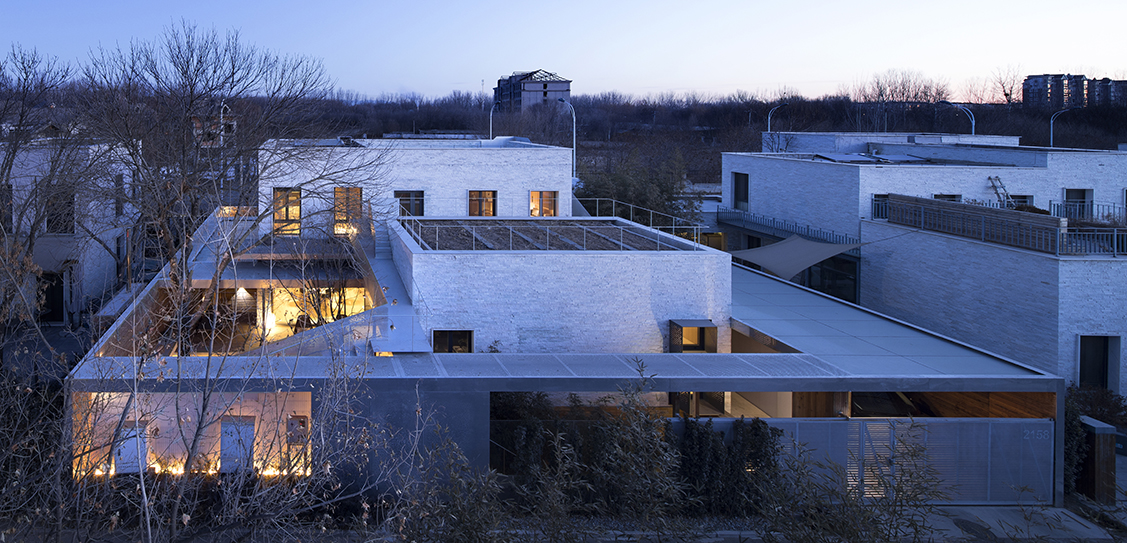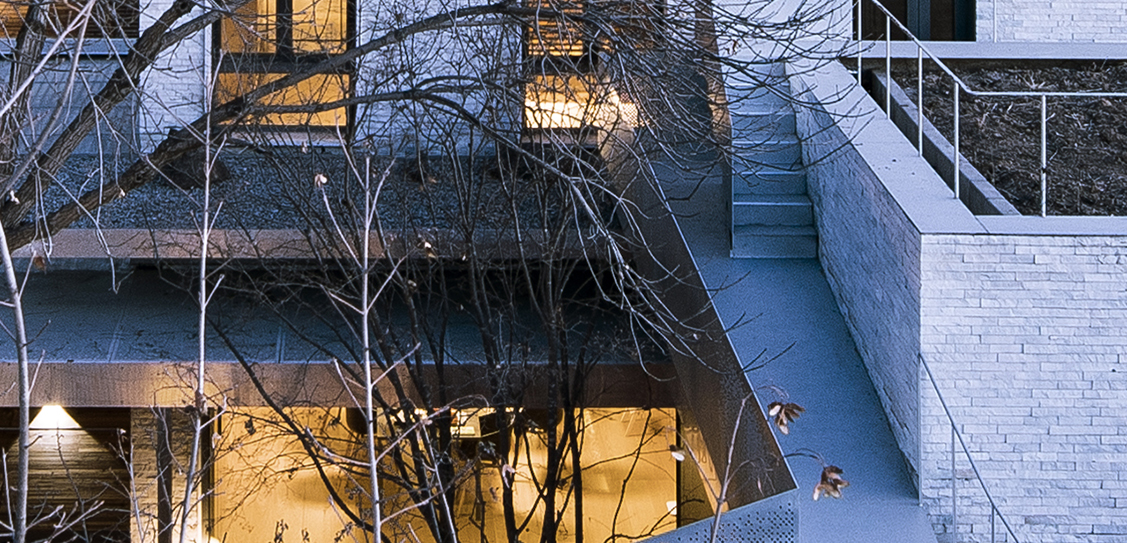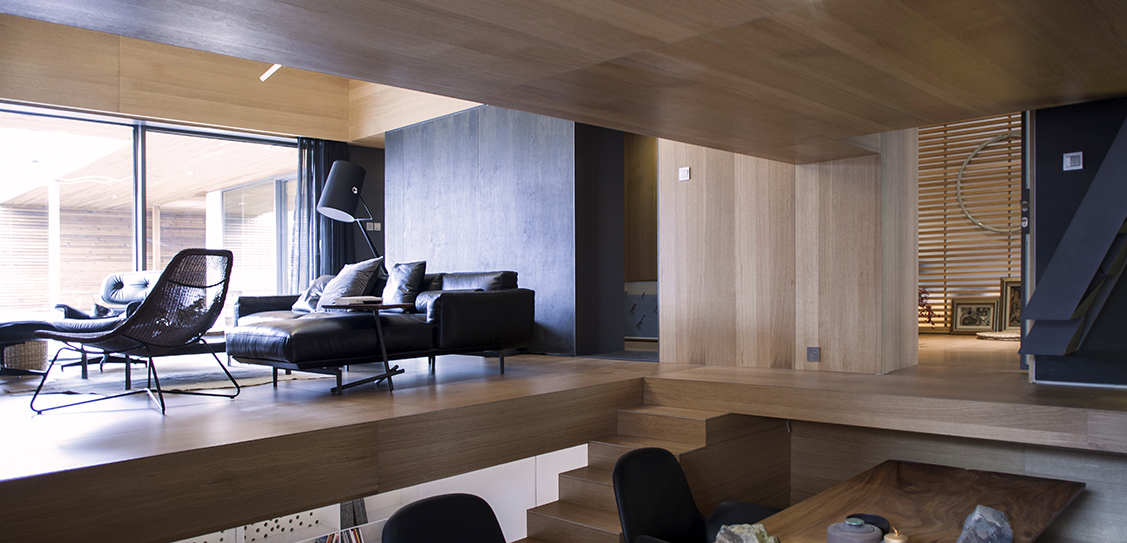This project was the intervention of a detached house located in a residential area filled with similarly styled housing; the intention in recreating the house was to isolate it from the surrounding ones, granting the owners a sense of stable mental liberty. The structure features three levels, an underground, ground and first floor; two studios for architectural and artistic creations were designed to be separate from the other rooms. The material application of wood and metal contributed in creating the relationship between architecture and nature; the unity between architectural functionality and comfortableness was a priority in the design.
The site and the original building is covered with a gigantic enclosure; the enclosure blurs the boundaries between the building and courtyard, interior and exterior, combining all into one, the trees and natural light, whilst maintaining their unique and self-contained characteristics. The space also produces a series of changes from the interior to the exterior, underground to ground, a primitive base to a number of yards, the original flat base to a combination of multi-dimensional space. Space is free to stretch like an abstract landscape; artistic conceptions of the Chinese landscape are interpreted by geometric space, from bottom to top, from left to right and converting among different situations.
The new building has few constraints, if any, and gives those who walk through it a perception of liberty; a multidimensional place was created in this continuous space. Gray space, between indoors and outdoors, gives the place characteristics of multiple levels. Because of the rolling space and the control of light and shadow, the residential area can be separated and linked at the same time in order to switch among varieties of space fragments, making daily life more dramatic.
The original floors, walls, roofs and external structures were aligned as much as possible to maintain the continuity from inside to outside; with the exception of a layer of glass for heat blocking. The pursuit of unity aimed to introduce the existence of nature directly so that the natural light and scenery could extend to interior space without any obstacle. The interior space is symbiotic with nature, and will change with the seasons, including the indoor colours. Therefore, in addition to the compulsory functions and materials, the interior space needs no extra decoration. Here, the huge "cover" will mix all together, the natural and artificial environment blur; the building is no longer a device which separates people from nature, but a junction of the two.
In the whole building, there exists a series of heights, 2.3 m, 2.2 m, 2.1 m, but also a walking width of 0.7 m. These dimensions represent the boundaries of space oppression, but bring the greatest perception of the building; the building is almost accessible at one’s fingertips in a way it contorts to the space around oneself comfortably like well fitting clothes; architecture within reach can make people feel the realism of the material world.
By blurring the beginning with the end, an infinite sense of continuous space is created, producing infinite possibilities in a limited area. These design methods are similar to the traditional garden where the boundaries between architecture and landscape are indistinguishable because of the inseparable space. From the ground to the air, from the vestibule to the back room, a complete set of space systems were formed. A kind of third space formed by a huge "building cover", together with the original building, divides the courtyard into various "sub-courtyards", and each "sub-courtyard" has its own system. They are all connected to their respective interior space; some sink into the ground below and echo with the basement space, forming a unique spatial characteristic.
Because of the needs of the site and the function, the house is designed into various spaces of different sizes. Although these spaces have their own independence, they are not isolated. Prefabricated concrete slabs and the staircase capable of being folded out of steel plates and bifurcated steel ramps are tightly connected together and form a continuous path. This 70cm wide path is accurate and lightweight, the staircase formed by the steel plate evokes the style of origami.
The basic materials of the building are solid wood and aluminum panels. The outer layer is corrosion-resistant aluminum panels and are the basic protection of the building, like an outwear; the inner layer is red cedar wood, like a lining of clothes, more moderate and more comfortable; wood is a continuation of nature, warm in physical properties from its appeal by sight and occasionally smooth to the touch. While aluminum is the opposite, thin and cold in physical properties, and more resistant to external attacks. With the two imposing together, another new kind of thickness and richness of space comes into being. In some parts of the building, fair-faced concrete slabs and steel plates intersperse in the building space, which directly express the essence of the materials. Trees, rocks and the infinite pool in the courtyard, have also been integrated into a portion of the building.



